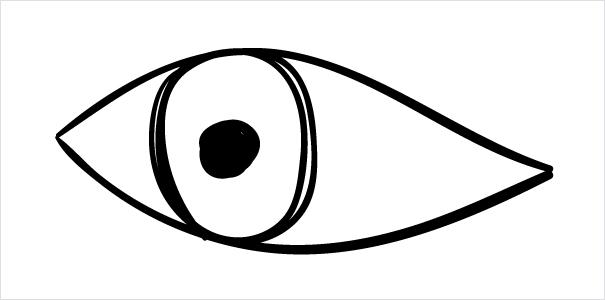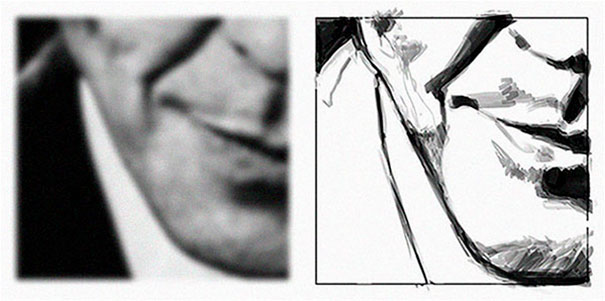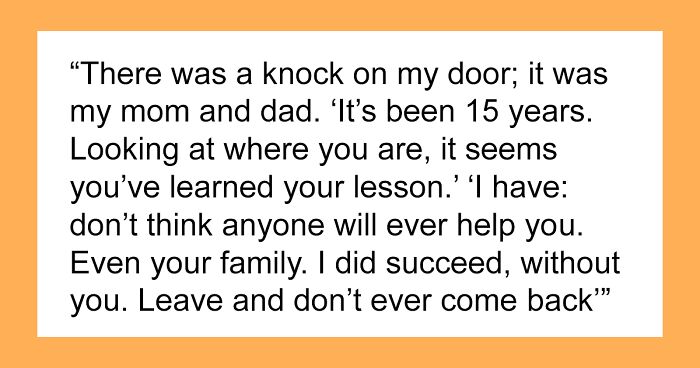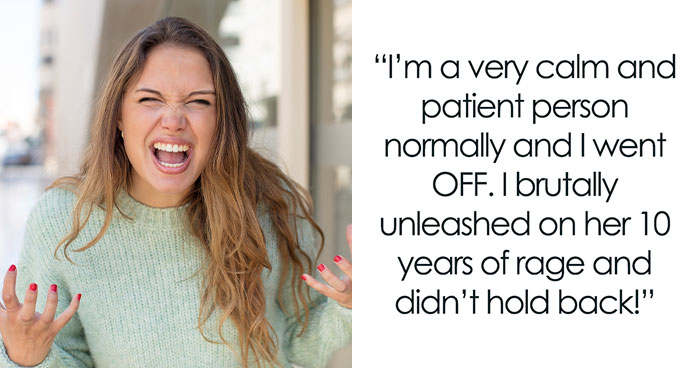
Artist Points Out The Mistakes Beginner Artists Make Because They Draw With Their Brain, Not Their Eyes
Drawing is a form of art people dedicate their entire lives to. But when their beautiful drawings inspire you to pick up a pencil, you might end up with a hideous doodle that looks more like graphite vomit than an attempt to portray something. But don’t worry. Imgur user omgrun has created a drawing tutorial for beginner artists, showing why most rookies fail. And yes, they’ve included the sauce that most schools lack – the informal language that compliments the information so well, the step-by-step tutorial on drawing techniques becomes easy to digest.
How to Draw With Your [friggin] Eyes and Not Your [friggin] Brain: The [stuff] your art teachers tried to teach you but totally sucked at (probably)
1. Okay so congratulations! You are learning how to draw! You took the first big step to learning! I’m really proud of you because I know sucking for a long time at something before you get good is not easy but you are brave and did it anyway. FEAR NOT!!! I’m here to teach you what I consider one of the most valuable skills there is… HOW TO DRAW WITH YOUR EYES AND NOT YOUR BRAIN.
2. Something that totally [screwed] you if you are trying to draw, for example, a face from a picture, is your brain’s ability to recognize symbols. What I see a lot in beginner artist’s work is people NOT drawing what they see, and instead of drawing a SYMBOL of what they see. What is this… some sort of philosophy?? No, let me explain.
3. Here is an extreme example. The artist sees an eye…. so they draw what their brain tells them an eye is. Something like this, right??
The artist sees eyelashes. So they draw what their brain tells them eyelashes look like.
4. However, they have COMPLETELY disregarded what their EYES are telling them. ALL the information is right there!
5. If we use our eye to mentally trace the shape of the eyeball, we see it’s not very ovular at all, really… sort of angular. His iris isn’t a perfect circle, and his eyelid is covering part of it. And you can barely even SEE the lashes on half of his eye! DON’T ignore what your eye is telling you! The shape of this white space matches the shape I drew!
6. If you say… [damn]… I’ve been drawing with symbols all along! SLOW YOUR ROLL. Let’s break this down. When you draw, you are not drawing a face. You are not drawing a nose. You are not drawing EYES OR HAIR OR ANYTHING LIKE THAT. You are drawing SHAPES. “Hey! Is this more philosophy bullsh*t?” you say. No. Every drawing on planet earth is a combination of light and dark SHAPES. Every drawing is an illusion. So, for the sake of the example, let’s say you are trying to draw this guy. I got this reference image from google images and I chose it because it has very defined areas of light and dark. The more defined SHAPES you have in your reference, the EASIER it will be for you to draw.
Let’s look just at it JUST as light values, completely forgetting color for now.
7. So the easiest way to get your brain to stop seeing symbols is to FORCE it to stop seeing symbols. This becomes easier when you turn your image upside down! Have you started noticing shapes yet? Drawing blind contour drawings will help you with this skill!!!
Here’s some easy to notice ones. A physical object… a collar… easily becomes a shape. MENTALLY trace the shape. Pay attention to each curve and angle. Note: this is not how I would typically start a drawing. I am just pointing out shapes to get your brain in the right place. You will not be good at this when you first start. Drawing blind contour drawings will help you with this skill!!!
But how do we actually use this to draw a face? IMPORTANT: do NOT let yourself be distracted by fine details! Focus on the large areas first, and then begin to add details! My teacher always taught me to SQUINT, so let’s blur! LOOK AT ALL THESE SHAPES
Let’s start drawing! I like to start with the darkest values first. If you are using your eyes, you should be looking at your reference image as much or MORE than you are looking at your drawing.
Treat your drawing like a “find the differences” game. Does the shape you just drew look like the one in your picture? No? Find the differences!
INACCURACIES EVERYWHERE. While I am drawing, I am also judging or comparing the shapes I am drawing to those in the reference image. I am judging their -VALUE (how dark/light they are) -POSITION in relation to other shapes -the SHAPE itself. This needs to be happening CONSTANTLY. THIS shape looks odd…
I imagine the edge of my drawing area like a ruler, and re-draw the shape to match the one my EYES see. While doing that, I can see that the jawline I drew is a bit too far out. FIND THE DIFFERENCES!!!
I continue refining my image. I even used the transform tool at some points to help fix my sketch. DO NOT be afraid to erase, even if it’s a large part. Your image will look better because of it. You can always redraw.
Whoa… that was a lot of work, right? I mean, DANG. A lot of detail. But flip that thing over…
HOLY COW! Pretty good start, actually! GOOD NEWS: The more you do this, the better you will get!
THERE YOU GO, CONGRATS, YOU CAN NOW USE YOUR [friggin] EYES AND NOT YOUR [friggin] BRAIN TO SOLVE EVERY ART PROBLEM EVER. So maybe I m exaggerating buuuut who cares
And remember ladies and gents, in the WISE WORDS OF BOB ROSS… TALENT IS A LIE. No one has ever gotten good at something by popping out of their mom’s vagina. Talent means you practice hard and draw every day and be proud of EVERY SINGLE THING you draw and even the things you FAIL at because it means you are ONE STEP CLOSER to being an EXPERT!
People felt had a lot to say about this tutorial
I am so grateful this article came around! I've always struggled with drawing. When I was 8, I was so bad, a teacher couldn't resist the urge to pick up my actual drawing from my desk, holding it like a piece of trash (by the way, it was trash) and shouting in anger humiliating me in front of the class. I don't remember receiving actually useful advice on how to draw in my whole school carrier, though I attended a good middle school. But I think it is never too late to get started, and this article will be a good point for it.
Wow, such a s****y teacher. I've taught art classes before and i can't move from student to student without insisting that they learn something from it. In my first classes everyone starts the way I did in college. Everyone gets some newspaper and they practice drawing circles and straight lines freehand. I tell the kids they can't use an eraser. They should learn to be comfortable making a mess at the start in order to get figure out what they're drawing but stress the importance of light lines. I then build the process from there.
Load More Replies...Being an illustrator myself I partially disagree. This indeed a good method for beginners how to learn to draw realistically but it's just about drawing something that already exists. To become a real artist, to create something from scratch, you need to remember things, get to their core, understand how they work, then use this knowledge to create something new. For example: Don't just copy a protrait. Look at the picture, understand the bone-structure and muscles behind the face, really take it in, then use it to create something original. But that are just my 2 cents.
I agree! I'm an illustrator myself and I do not think these are good instructions for learning how to draw. For learning how to copy - yes. There's nothing bad in copying, it is a great way to learn to draw like the masters. But it is only a small part of learning to draw realistically.
Load More Replies...I am so grateful this article came around! I've always struggled with drawing. When I was 8, I was so bad, a teacher couldn't resist the urge to pick up my actual drawing from my desk, holding it like a piece of trash (by the way, it was trash) and shouting in anger humiliating me in front of the class. I don't remember receiving actually useful advice on how to draw in my whole school carrier, though I attended a good middle school. But I think it is never too late to get started, and this article will be a good point for it.
Wow, such a s****y teacher. I've taught art classes before and i can't move from student to student without insisting that they learn something from it. In my first classes everyone starts the way I did in college. Everyone gets some newspaper and they practice drawing circles and straight lines freehand. I tell the kids they can't use an eraser. They should learn to be comfortable making a mess at the start in order to get figure out what they're drawing but stress the importance of light lines. I then build the process from there.
Load More Replies...Being an illustrator myself I partially disagree. This indeed a good method for beginners how to learn to draw realistically but it's just about drawing something that already exists. To become a real artist, to create something from scratch, you need to remember things, get to their core, understand how they work, then use this knowledge to create something new. For example: Don't just copy a protrait. Look at the picture, understand the bone-structure and muscles behind the face, really take it in, then use it to create something original. But that are just my 2 cents.
I agree! I'm an illustrator myself and I do not think these are good instructions for learning how to draw. For learning how to copy - yes. There's nothing bad in copying, it is a great way to learn to draw like the masters. But it is only a small part of learning to draw realistically.
Load More Replies...
 Dark Mode
Dark Mode 

 No fees, cancel anytime
No fees, cancel anytime 














































































303
62